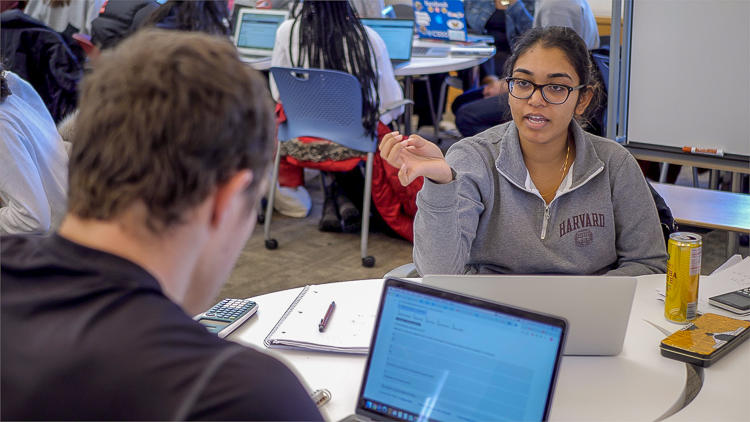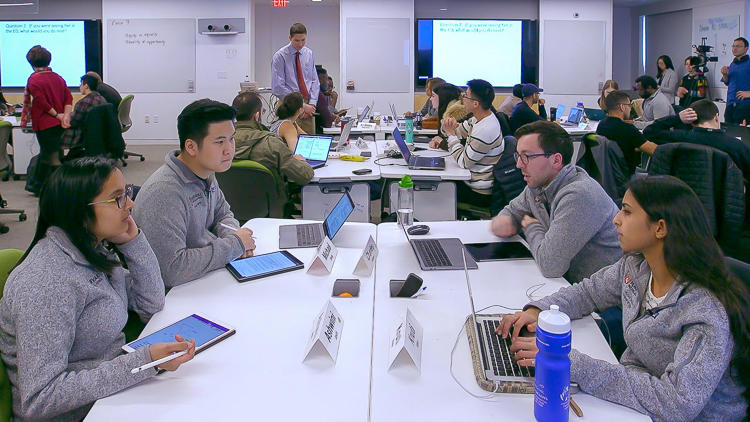Peer instruction discussions are an efficient and student-centered way to address common misconceptions about course concepts. By getting students to individually answer class questions and then getting those with different answers to talk to one another, you can encourage students to assess each others’ ideas and move closer towards the correct answer. In this video, Eric Mazur describes how he leverages peer instruction using in-class polling technology. He notes how even after a short discussion amongst peers, students can go from around 50 percent correct towards 80-90 percent correct.
Using Peer Instruction to Improve Student Learning
Instructor
Eric Mazur, Balkanski Professor of Physics and Applied Physics
Student Group
Undergraduate
School
School of Engineering and Applied Sciences
Course
AP50 Physics as a Foundation for Science and Engineering
Group Size
60 students
- Use collaborative reading technology to help you identify students’ misconceptions and questions about the class readings. This can help you identify what problems to set in your class for peer instruction.
- Give students enough class time to grapple with concepts and the resources to visualize their understanding if need be. When students know that these conditions are the norm, they are more likely to use peer instruction time productively.
- Ensure students are talking to others who have different answers from them. A common pitfall of “Think, Pair, Share” arrangements is that students do not hear alternative viewpoints and instead hear other students with the same misconceptions, which in turn simply reaffirms their incorrect views.
-
Peer Instruction has been linked to increases in content mastery and problem solving skills in physics classrooms across diverse institutional contexts (Crouch & Mazur, 2001; Lasry et al., 2008).
-
Schell and Butler examine peer instruction by drawing on theories and findings from the science of learning. They argue peer instruction is effective because it allows instructors to enact many teaching and learning principles supported by the science of learning such as retrieval practice (Schell & Butler, 2018; Roediger & Butler, 2011).
- Colorado State University’s Institute for Teaching and Learning provides descriptions of additional peer teaching methods like think-pair-share.
- The University of New Brunswick offers tips on different pedagogical approaches instructors might use when implementing peer instruction.




